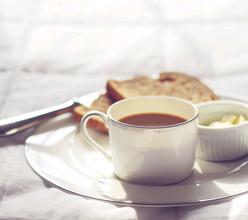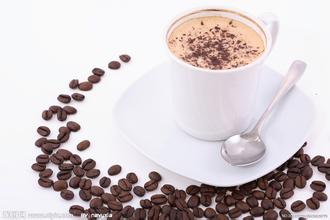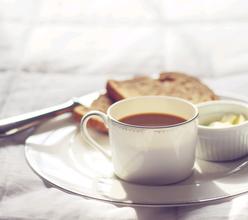Introduction of boutique coffee in Papua New Guinea Paradise Bird Manor Coffee Variety
Foreigners are mainly Australians. When you get off the plane and enter the immigration hall, there are three channels: PNG national passenger channel, visa-holding passenger channel and visa-on-arrival passenger channel. I am in the visa on arrival passageway, the visa process is very simple, the entry form and 100 Kina (local currency unit), the smooth entry, visa can stay there for two months. After finding the luggage, he went to the customs counter and the official only asked, "do you have any alcohol and tobacco?" After answering "no", he is allowed to pass (not even an X-ray machine). Exchange currency US$37.80 = K100 at the airport. According to locals, PNG Immigration and Customs have very loose controls on flights from Australia (usually arriving in the afternoon). However, for flights from Hong Kong, Manila and Singapore (which usually arrive in the early morning), they are particularly strict. When they get a visa on arrival, they will ask about the east and west, and the luggage will also be strictly searched.
Papua New Guinea's top coffee beans (PNG AA) are as beautiful and precious as the country's national bird of paradise. As coffee is widely grown in highlands between 1300 and 1800 meters above sea level, it is usually full-grained and varied in taste, with pleasant acidity and fruit-like sweetness. PNG coffee beans are carefully washed Arabica beans with a texture as strong and mellow as a Van Gogh painting. Whether it is used to mix Italian products or general mixed coffee, it can make up for the lack of sour coffee.
PNG coffee beans are favored by more and more coffee lovers in recent years because of their rich flavor, pleasant aroma, no herbal flavor or local flavor, and the rarity of coffee beans.
The coffee industry plays an important role in the country's economy. More than 1 million people are directly and indirectly engaged in the industry. The government encourages planting by offering a minimum purchase price. The industry itself is controlled by the Coffee Industry Council (Coffee Industry Board). The commission is located in Goroka, in the eastern part of the island, while exports are handled by private companies.
The frost in 1975 destroyed most coffee crops in Brazil, but stimulated the development of coffee in Papua New Guinea. The Government has implemented a scheme to finance the creation of about 20 hectares of coffee plantations in rural or collective land ownership. This measure has indeed increased the penetration of coffee in the local economy, with annual production reaching 1 million bags by 1990.
However, it is almost inevitable that the surge in production leads to a decline in quality. Before 1991, the quality of coffee was good, and most of it belonged to open Y and so on. After 1991, the quality gradually declined, and with it the European market was lost. The extra price of coffee such as Y also gradually fell. This is related to the country's policy of "one grade, one price". This policy is not feasible for an industry as volatile as coffee. As a result, poor quality coffee beans have damaged the image of high quality standards for coffee such as Y, resulting in a backlog.

Important Notice :
前街咖啡 FrontStreet Coffee has moved to new addredd:
FrontStreet Coffee Address: 315,Donghua East Road,GuangZhou
Tel:020 38364473
- Prev

Introduction to the flavor characteristics of Nicaraguan lemon manor coffee varieties with mild taste
Nicaragua is one of the major coffee-producing countries, producing high-quality coffee. Even coffee from the Antigua Mountains of Guatemala, which is famous in Asia, imports raw beans from Nicaragua. Although Nicaraguan coffee is not famous in Asia, Nicaragua coffee is already famous all over the world (Starbucks has many cooperative coffee farmers in Nepal), while several coffee-producing countries in Central America
- Next

Introduction to Coffee Flavor and Taste characteristics of Xida Motede Manor in Ethiopia
There are mainly mountain plateaus in Ethiopia, and the central and western regions are the main part of the plateau, accounting for 2% of the whole territory. The East African Rift Valley runs through the whole territory, with an average elevation of nearly 3000 meters, which is known as the roof of Africa. The terrain around the plateau is gradually declining. The Darol depression in the north fell to 113 meters below sea level, the lowest point in the country. A narrow banded plain along the coast of the Red Sea
Related
- Does Rose Summer choose Blue, Green or Red? Detailed explanation of Rose Summer Coffee plots and Classification in Panamanian Jade Manor
- What is the difference between the origin, producing area, processing plant, cooperative and manor of coffee beans?
- How fine does the espresso powder fit? how to grind the espresso?
- Sca coffee roasting degree color card coffee roasting degree 8 roasting color values what do you mean?
- The practice of lattes: how to make lattes at home
- Introduction to Indonesian Fine Coffee beans-- Java Coffee producing area of Indonesian Arabica Coffee
- How much will the flavor of light and medium roasted rose summer be expressed? What baking level is rose summer suitable for?
- Introduction to the characteristics of washing, sun-drying or wet-planing coffee commonly used in Mantenin, Indonesia
- Price characteristics of Arabica Coffee Bean Starbucks introduction to Manning Coffee Bean Taste producing area Variety Manor
- What is the authentic Yega flavor? What are the flavor characteristics of the really excellent Yejasuffi coffee beans?

